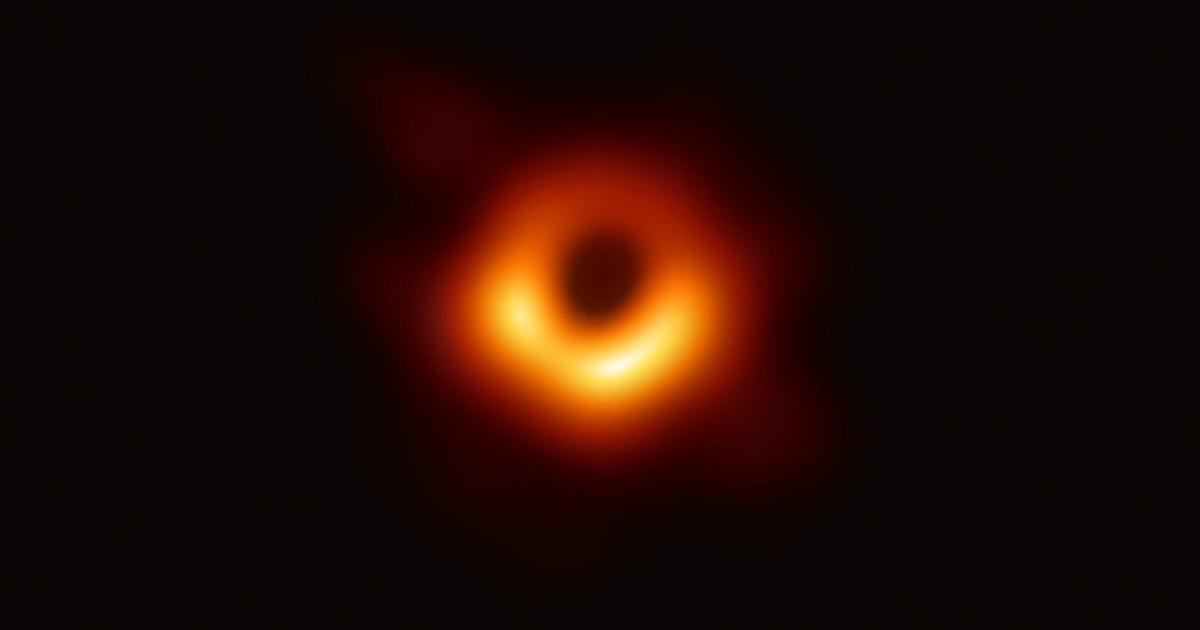
The Event Horizon Telescope project is set to unveil what it calls “ground breaking Milky Way results” on May 12. Though details are scant about exactly what will be revealed, there’s a strong possibility astronomers have been able to take a picture of the supermassive black hole at the center of the Milky Way for the first time.
In April 2019, the EHT collaboration unveiled the very first image of a different black hole, the supermassive beast at the center of the Messier 87 galaxy, dubbed M87*.
The Event Horizon Telescope was able to generate the image by using eight radio telescopes from across the planet. Synchronizing these telescopes helped produce the image above. Though it looks a little like an out-of-focus campfire, it was a breakthrough result: The first time humans had set eyes on the universe’s most fascinating and confounding objects.
Further work revealed the extreme magnetic fields associated with M87*, allowing scientists to further understand the environment around the black hole.
But the EHT wasn’t studying just M87*. The suite of telescopes that make it up had also been focused on the supermassive black hole at the center of the Milky Way known as Sagittarius A*, or Sgr A*. The black hole is about 4.3 million times more massive than the sun and sits just 25,000 light-years from Earth — close, in cosmic terms. For comparison, M87* is about 6 billion times more massive and about 50 million light-years from Earth.
Imaging Sgr A* is much harder than M87* because there’s a lot more stuff — cosmic gas and dust — that interferes with radio telescopes when looking toward the heart of our home galaxy. That’s why it was “easier” (and I use that term very loosely) to get a photo of M87* first.
But… could the EHT have overcome those issues? Heralding a result like this means something big is coming and this is the same playbook the collaboration used in announcing the results of M87*. To be clear from the outset, press releases from the EHT collaboration have not suggested we’re going to get a new black hole photo. They’re merely calling this a ground breaking discovery in the Milky Way, but given the history of the EHT, it’s hard to imagine what else this could be.
What is a black hole? The universe’s dark, mysterious monsters
That makes it hard to say exactly what the groundbreaking result will be, my bet would be on the second ever photo of a black hole and the first image of our home galaxy’s cosmic behemoth.
After speaking to astronomers, who are not associated with the EHT project, on Thursday, and scrolling through Twitter it seems that almost everyone believes this will be an image of our galaxy’s dark heart.
So, astronomers, I’m begging you: Just tell us there’s a great photo of the Sgr A* coming. Tell us we will be able to see the Milky Way’s supermassive black hole on May 12. We’ve put two and two together! This isn’t a Marvel movie! You don’t have to give us this post-credits scene to tease us about the sequel. We know what you’re up to and we’re buying tickets to the show anyway.
And, if this isn’t another black hole image, then the radio telescopes have found something else that warrants such foreshadowing — you’ll still want to tune in.
The results will be presented during a press conference on May 12 at 6 a.m. PT (9 a.m. ET) and you can follow along. It will be livestreamed on the US National Science Foundation website, and CNET is sure to have coverage you can follow along.


